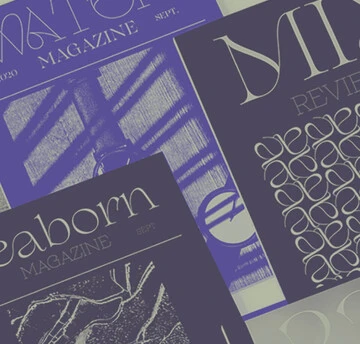Good Type part 8: The Devil in the Details.
Good Type is a 10-part series of videos and articles that aim to answer a simple question: What makes good type … good? The series offers an in-depth look at different aspects of font design to help designers understand how to choose the right font for a given project. Be sure to read parts one, two, three, four, five, six, and seven if you missed them.
It was Beatrice Warde who first compared typefaces to the clothes that words wear. A finely tailored suit can completely change a person’s appearance, and in the same way typefaces can drastically alter what words mean, how they work, and how they make us feel.
But just as a torn seam or a missing button would spoil the effect of a Savile Row suit, so too can the details of a typeface put readers off. Good kerning is key for a font to work seamlessly.
“Fonts are made up in these invisible regions – binding boxes, and things called side bearings that add space to the outside so that each letter doesn’t smash into the other,” explains Monotype Director of Product Design Jamie Neely. “When designing the typeface, this should be part of the design process – although it’s sometimes done afterwards – but that natural spacing is a sign of quality.”
For type designers, kerning is a huge undertaking. There are thousands of pairs of letters that can pose problems when used together, which means hours spent laboriously adjusting the spacing. Monotype designer Toshi Omagari helped assuage some of the monotony of this by connecting an X-Box controller to the Glyphs app, and kerning with that.
Even after this, problems can still arise with certain character combinations that throw the rhythm and visual clarity of a typeface off. Graphic designers can use kerning as an ‘override’ for these situations, adjusting letters’ side bearings to return a sense of regularity. Particular attention should be paid to script fonts and the spacing between connections. These kinds of designs often work well in their own nameplate, but can fall apart when used to set natural language. One way to try these out is to put a sentence into the type tester, and see how it hangs together.
“Be suspicious of perfection,” says Neely. “It sounds weird but sometimes shapes can look larger than others, and they’re the same dimensions even though their volume is different. What’s happening here is that there are things going in on our minds that are over- or under-compensating for the geometry that we see.
“To counteract that, experienced designers know to use things like overshoot or undershoot to make the circle larger and the triangle taller, so that they’re perceived as the same size even if they’re not really.”
Often, geometric imperfection is actually a bonus, and letters don’t necessarily all have to sit exactly on the baseline.
“Even when typefaces are very Swiss and regimented, you see this,” adds Neely. “If things do line up, generally it’s a pretender.”
Stay tuned for more from the Good Type series. Video recorded live at Adobe Max 2017.











